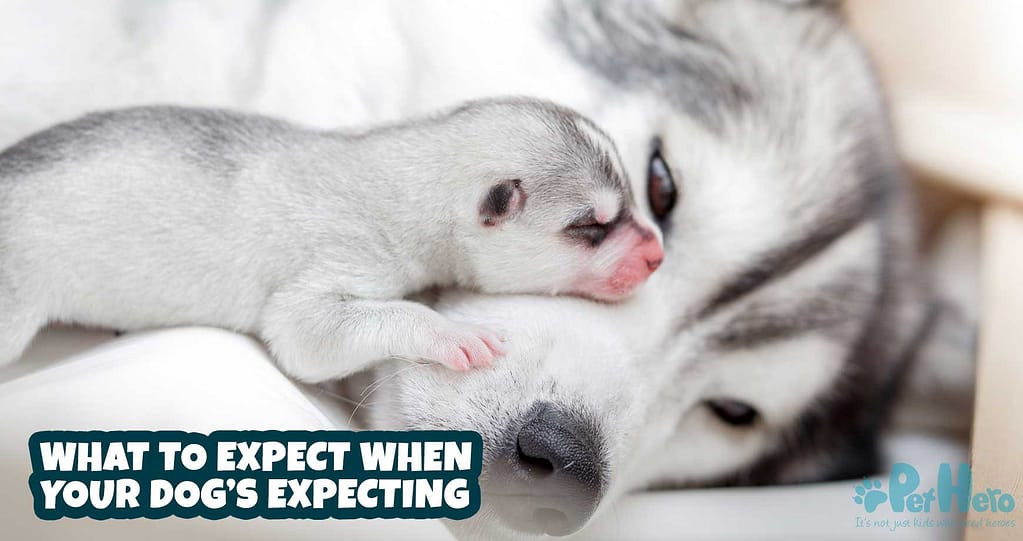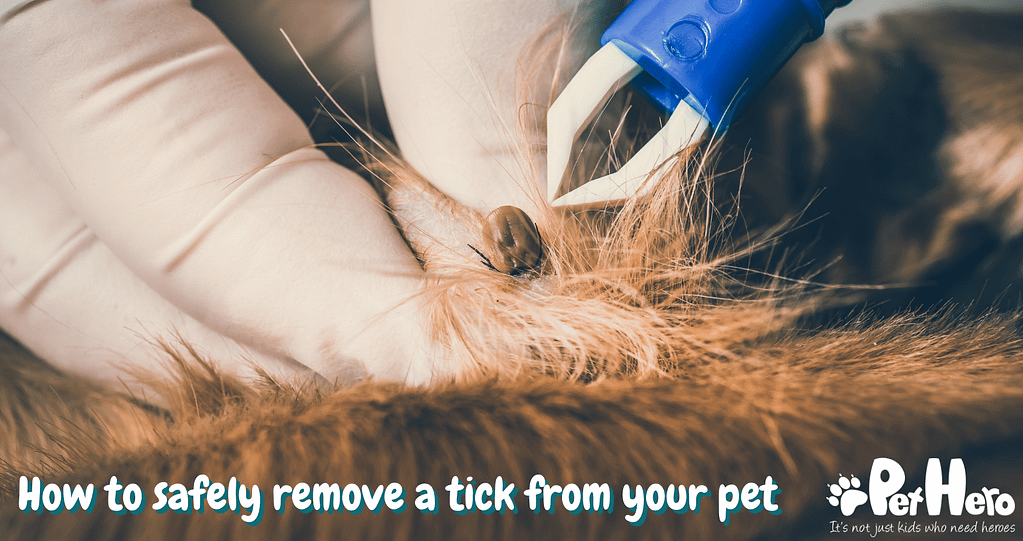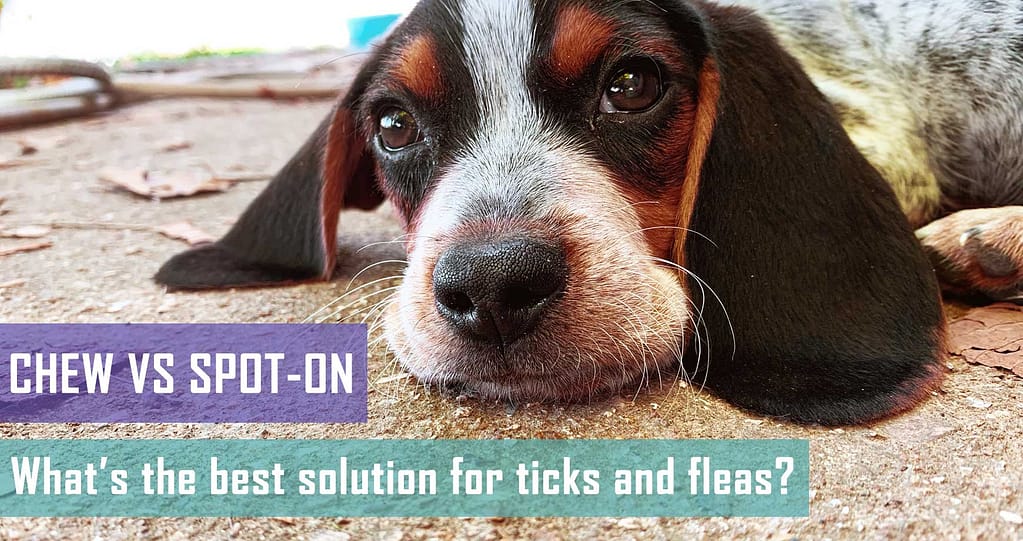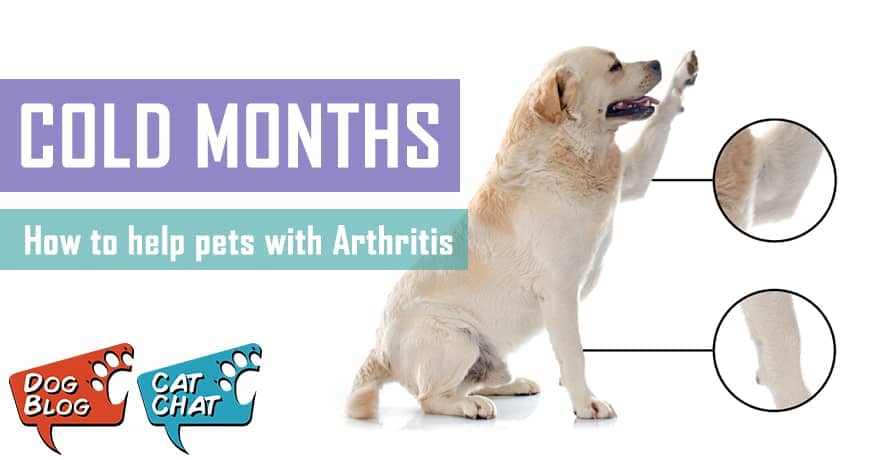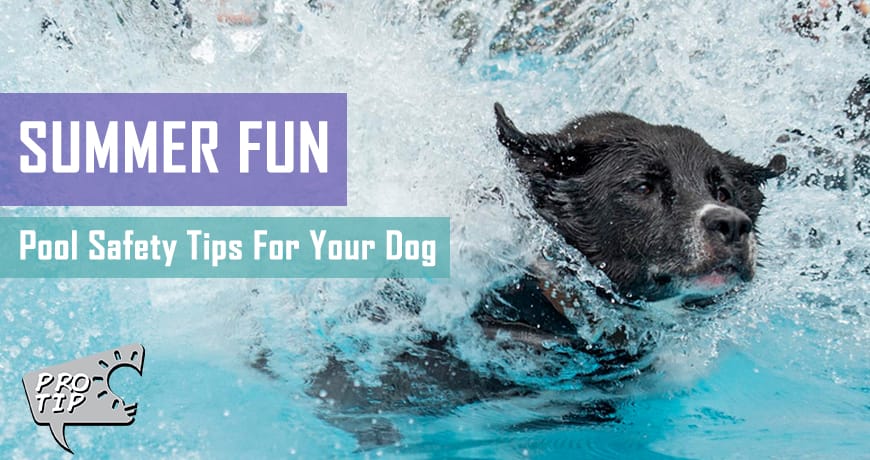Disclaimer:Pet Hero advocates for the spaying and neutering of domestic pets as this is the most effective method of reducing the tremendous pressure on animal welfare organisations in South Africa. Fewer unexpected puppies and kittens means that those dogs and cats already in animal shelters have a better chance of finding their forever homes instead of facing lifelong confinement or premature euthanasia. The following article is for information only, should pet heroes find themselves suddenly caring for a pregnant dog. We strongly discourage the indiscriminate breeding of family pets.
Let’s just say from the outset that pregnant dogs have it easy compared to pregnant humans. For one, the puppy gestation period is only nine weeks long! But in those nine weeks (which can range from 58 to 68 days), mamma dog needs to grow a whole litter of healthy, strong puppies and prepare herself for their birth. This is what you can expect from a pregnant dog – from conception to birth.
How can you tell if your dog is pregnant?
There are very few signs of pregnancy in the first few weeks, although some dogs will vomit or lose their appetite (their equivalent to ‘morning sickness’), get lethargic or they may even show signs of weight gain and puffy mammary glands or larger nipples. They may even become noticeably more affectionate than usual. If you want to confirm the pregnancy, dogs can be tested at around day 25 by using an ultrasound. Blood tests can be done 10 days later, and your vet can do an abdominal X-ray after day 45 to count the number of puppies. Day 25 to 50 is the window in which your vet should perform tests and check your dog’s condition to rule out any problems.
First trimester: Week 1 – 3 of pregnancy
A dog’s uterus is shaped like a Y. After conception, the tiny embryos move into the uterine horns (the tips of the Y shape), which takes around seven days. Each embryo is firmly embedded in the lining of the uterus by day 15 or 16. At the end of the first trimester (around day 22), the embryos will start to grow into foetuses.
At this stage, it’s not necessary to feed your dog more food, as her puppies are in the very early stages of growth, but if you do groom her, make sure it’s very gentle and stress free. Don’t stop exercising your dog, but decrease the intensity of exercise. So if she’s used to somersaulting during exciting frisbee sessions, rather take her on long walks. Maintaining a good physical condition will prepare her for the demands of birthing her puppies.
Second trimester: Week 4 – 6 of pregnancy
At the beginning of week 4 (day 22), the growth of the puppy foetuses will begin to speed up. When you take your dog to the vet for an ultrasound (on day 25 – 28), speak to your vet about the best nutrition for pregnant dogs and how to adjust your dog’s diet so she gets enough nutrients to grow strong, healthy puppies. When the vet performs the ultrasound, they will be able to detect the puppies’ heartbeats. Some vets will be able to feel the growing puppies with their hands (called palpation), but please do not try this yourself as it may jeopardise the delicate embryos and cause a miscarriage.
By week 5 (day 32), the puppies’ eyelids will form and by day 35, their toes will have developed. By the middle of week 6 (day 40), those tiny toes will have grown claws. At this stage, you will see a very noticeable change in your dog’s belly because of the fast-growing puppies. While the foetuses are now growing at an accelerated rate, your dog may eat a lot more than usual, so make sure she has access to enough high quality food with lots of protein. Her eating patterns may change and she may want to eat more small meals throughout the day rather than one or two large meals. This is a good time to ask your vet about feeding your dog with puppy food (which is recommended during pregnancy and nursing) so she gets all those necessary nutrients for her puppies’ growth and development.
Third trimester: Week 7 – 9
You can ask your vet to do an X-ray of your dog’s belly (day 50). The puppies’ skeletons will have ossified by the beginning of week 8, which will make them visible on the X-ray. This will give the vet the opportunity to ensure all the puppies are healthy inside mamma dog’s belly, as well as to count the number of pups. Knowing how many puppies to expect will ensure you can give your dog the best care during the birthing process and when to take her to the vet if she struggles to deliver all the puppies.
You’ll notice that your dog’s teats will be quite prominent as they are filling with milk and may even be leaking cloudy colostrum. If you look closely, you might see moving foetuses beneath your dogs’ skin. This is your cue to prepare a whelping box or even your dog’s own room to deliver her puppies. She may show ‘nesting’ tendencies – digging, assembling blankets or general restlessness.
Preparing for your dog’s delivery day
Since it’s near impossible to pinpoint your dog’s exact due date, keep an eye on her behaviour. By day 58, she may be exhibiting signs of restlessness, loss of appetite, panting and pacing – these are all indications that she’s ready to deliver her puppies. Get lots of blankets and towels together and prepare a safe, quiet and private spot for your dog. The floor must be easy to clean and the room must be warm, as the puppies will not be able to regulate their own body temperature for a while. A large box or even a kiddie pool will make the perfect confined area for the birth of a litter of puppies.
Your dog’s waist may begin to trim as the puppies move into the birth canal and then you need to be ready to expect those puppies at any time. Make sure your dog will not be interrupted or placed under any stress while she’s giving birth. During the birthing process, her instincts will take over, so generally no intervention is necessary unless she is in distress. Keep visitors to minimum – she needs peace and quiet during delivery.
The three stages of puppy delivery
Dog labour can be as varied as human labour – lasting from a few minutes to an hour or two per puppy. There are three stages of puppy delivery that will give you an indication of how your dog is doing and what comes next:
Pre-labour
In the day or so before active labour, your dog will be quite restless, won’t want to eat and may even toss around the blankets and newspapers in her whelping box/area. This is the ‘any moment now’ stage.
Active labour
Your dog will begin to push to get the puppies out. They will be birthed one at a time, each one emerging from her vulva in a foetal sack. As each puppy is delivered, she will tear open the foetal sack and clear the puppy’s face and muzzle of any liquids. If the litter is large and your dog gets tired towards the end of active labour and does not tear open the foetal sack in time, you will need to do this with clean, gloved hands and then wipe down the puppy’s face with a clean towel. Some puppies may need to be rubbed with a clean towel to clear any mucous and liquids from their lungs.
The same goes for severing the umbilical cord for each puppy. Your dog should do this instinctively, but if she doesn’t, you can tie off the umbilical cord with a piece of cotton about 3 cm from the puppy’s body. Cut the cord between the knot and the placenta.
If you know there are more puppies coming, but your dog strains for more than an hour without any more pups emerging, it’s time to call your vet and ask for advice.
NEVER try to pull the puppies out! This could seriously harm them and your dog.
Post-partum
Once all the puppies have been delivered and are out of their foetal sacs, your dog will go to work on cleaning them, feeding them and caring for them. It is your job to then care for her. Gently encourage your dog to eat some nutritious canned food, allowing her to regain her strength and produce milk for her puppies.
There may be a bloody discharge for a few days after the birth of her puppies, but this will lessen as the days pass. It is important to take your dog and all her puppies to the vet within 24 hours after the birth. The vet will provide veterinary aftercare and ensure that there are no infections or sores that may cause any discomfort, and that your dog’s health is in top condition. For the next eight to 12 weeks, the puppies will grow quickly. They bond with their mother and siblings and spend this early part of their lives learning social skills and self-esteem. This should also give you enough time to find good homes and to screen new pet pawrents to ensure your dog’s puppies will have the best forever homes with their own pet heroes. Finally, speak to your vet about spaying your dog as soon as it is safe to do so.

